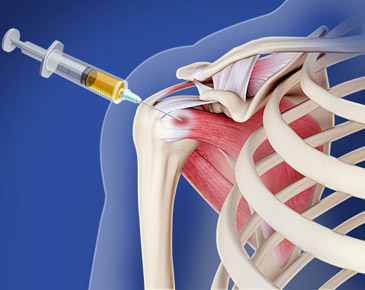Neurodegenerative Diseases
Parkinson's Disease: Stem cells can replace damaged dopamine-producing neurons in the brain, potentially alleviating symptoms of Parkinson’s disease.
Alzheimer’s Disease: Although still in research stages, stem cells have the potential to replace damaged brain cells and improve cognitive function.
Amyotrophic Lateral Sclerosis (ALS): Stem cell therapies may offer hope for regenerating motor neurons damaged by ALS, although research is ongoing.
Multiple Sclerosis (MS): Stem cells can repair damaged nerve cells and help regenerate myelin, the protective covering of nerve fibers, potentially improving mobility and reducing disability.
3. Orthopedic and Musculoskeletal Conditions
Osteoarthritis: Stem cells can regenerate damaged cartilage and reduce inflammation in joints, improving mobility and reducing pain.
Rheumatoid Arthritis: Stem cells can help reduce inflammation and modulate the immune response in autoimmune diseases like rheumatoid arthritis, possibly slowing or halting disease progression.
Bone and Cartilage Damage: Stem cells can help regenerate bone tissue and repair cartilage damage caused by trauma or degenerative conditions.
Spinal Cord Injuries: Stem cells have the potential to regenerate damaged spinal cord tissue, which can improve movement and sensation in patients with spinal cord injuries.
4. Blood and Immune System Disorders
Leukemia and Lymphoma: Stem cell transplants (typically hematopoietic stem cells from bone marrow or blood) are a standard treatment for blood cancers, replacing damaged bone marrow and regenerating healthy blood cells.
Sickle Cell Disease: Stem cell therapy can be used to replace defective blood cells with healthy ones, offering potential cures for this genetic disorder.
Aplastic Anemia: In this condition, the bone marrow fails to produce sufficient blood cells. Stem cell transplants can replace the faulty bone marrow and restore blood cell production.
Thalassemia: Stem cell transplants can replace the defective blood-producing cells in patients with this inherited blood disorder.
5. Endocrine and Metabolic Disorders
Diabetes: Stem cells, particularly pancreatic stem cells, can be used to regenerate insulin-producing cells in the pancreas, offering the potential to treat Type 1 diabetes or improve insulin function in Type 2 diabetes.
Hypothyroidism: In cases of thyroid damage or dysfunction, stem cells may help regenerate thyroid tissue and restore normal hormone production.
6. Eye Diseases and Vision Loss
Macular Degeneration: Stem cells may be able to regenerate retinal cells, offering hope for treating age-related macular degeneration (AMD) and other causes of vision loss.
Retinitis Pigmentosa: Stem cell therapy has been investigated as a way to replace damaged retinal cells in patients with inherited retinal diseases like retinitis pigmentosa.
Stem cell therapy holds great promise for cardiovascular diseases, offering the potential to regenerate damaged heart tissue, improve blood flow, reduce inflammation, and restore heart function. It represents an exciting avenue for treating chronic heart conditions, such as heart failure and coronary artery disease, that have limited treatment options. However, more research and clinical trials are necessary to fully understand the long-term effects and risks associated with these therapies. As the science advances, stem cells could play an increasingly important role in treating heart disease, improving patient outcomes, and reducing the need for heart transplants or other invasive interventions.

Stem cell therapy holds significant promise for treating cardiovascular diseases (CVDs) by harnessing the body’s ability to regenerate damaged heart tissue, improve blood flow, and restore heart function. Here’s how stem cells can help in the treatment of cardiovascular diseases:
1. Regeneration of Heart Muscle
Repairing Heart Tissue: In conditions like heart attacks (myocardial infarctions) or heart failure, the heart muscle can be severely damaged due to a lack of oxygen. Stem cells, particularly cardiac stem cells and mesenchymal stem cells (MSCs), have the potential to regenerate heart tissue by differentiating into heart muscle cells (cardiomyocytes). This can help repair the damaged tissue, improving heart function and reducing the symptoms of heart failure.
Cardiac Tissue Replacement: Stem cells can also form new blood vessels (a process called angiogenesis), which improves the blood supply to the heart muscle, further aiding in the regeneration of damaged tissue.
2. Restoring Blood Flow (Angiogenesis)
New Blood Vessels Formation: In cases of coronary artery disease (CAD), where the arteries that supply the heart with blood become blocked or narrowed, stem cells can stimulate the growth of new blood vessels. By injecting stem cells into the heart, it can promote angiogenesis—the formation of new blood vessels that bypass blocked arteries, improving blood flow and oxygen supply to the heart muscle.
Improving Blood Supply: This is particularly helpful for patients with chronic ischemia (reduced blood flow to the heart), a condition that can lead to heart failure if left untreated.
3. Reducing Inflammation
Anti-inflammatory Effects: Stem cells, especially mesenchymal stem cells (MSCs), have shown the ability to modulate the immune system and reduce inflammation in heart tissue. Chronic inflammation plays a key role in heart disease, particularly in conditions like atherosclerosis and after a heart attack. By reducing inflammation, stem cells can help prevent further damage to the heart muscle and improve healing.
Prevention of Scar Tissue Formation: After a heart attack, the heart forms scar tissue (fibrosis) as part of the healing process. However, excessive scar tissue can interfere with the heart’s ability to pump blood efficiently. Stem cells can reduce the formation of this scar tissue and promote the regeneration of healthy heart muscle cells, improving overall heart function.
4. Cardiovascular Repair After a Heart Attack
Post-Heart Attack Recovery: When a heart attack occurs, a portion of the heart muscle is deprived of oxygen and can die. Stem cell therapy offers the potential to replace the dead tissue with new, functional heart cells. The stem cells can integrate into the heart muscle and start performing normal heart functions, such as contracting and pumping blood.
Functional Recovery: Stem cells not only repair the structural damage but also improve the electrical signaling of the heart, helping to restore normal heart rhythms and reduce the risk of arrhythmias (irregular heartbeats).
.jpg)
5. Improving Heart Function in Heart Failure
Cell-Based Regenerative Treatment: In heart failure, where the heart’s ability to pump blood is compromised, stem cells can help restore heart function by regenerating heart tissue and improving the pumping capacity of the heart. This can reduce symptoms such as shortness of breath, fatigue, and swelling, and improve the patient’s quality of life.
Support for Chronic Conditions: In patients with long-term heart failure, stem cell therapy can slow disease progression, improve heart muscle function, and reduce the need for invasive interventions, such as heart transplants.
6. Types of Stem Cells Used in Cardiovascular Therapy
Mesenchymal Stem Cells (MSCs): These are often derived from bone marrow or adipose (fat) tissue. MSCs have the ability to differentiate into a variety of cell types, including heart muscle cells, and can promote tissue repair and reduce inflammation.
Cardiac Stem Cells: These stem cells are directly sourced from the heart and are capable of regenerating heart muscle tissue.
Induced Pluripotent Stem Cells (iPSCs): These are reprogrammed adult cells that can differentiate into any type of cell, including heart cells. iPSCs can be generated from the patient’s own cells, reducing the risk of immune rejection.
Endothelial Progenitor Cells (EPCs): These cells help form new blood vessels and can be used in therapies aimed at promoting angiogenesis in patients with heart disease.
7. Clinical Applications and Trials
Ongoing Research: Clinical trials are ongoing to determine the best methods of administering stem cells, the most effective types of stem cells, and the optimal conditions for treating heart disease. Some studies have shown promising results, while others are still in the experimental phase.
Autologous Stem Cells: Using stem cells derived from the patient’s own body (autologous stem cells) reduces the risk of immune rejection and complications, making this a preferred method in some cases.
8. Limitations and Challenges
Effectiveness and Safety: While stem cell therapy offers great potential, it is still being studied, and its long-term effectiveness and safety are not fully established. The success of stem cell treatments can vary depending on factors like the patient’s age, the type of heart disease, and the stage of the condition.
Ethical and Regulatory Issues: The use of stem cells, especially embryonic stem cells, is subject to ethical considerations and regulatory guidelines, which may limit their availability and use in some regions.
Risk of Tumor Formation: There is also a potential risk of stem cells forming tumors if not properly controlled, especially when using pluripotent stem cells like iPSCs.






